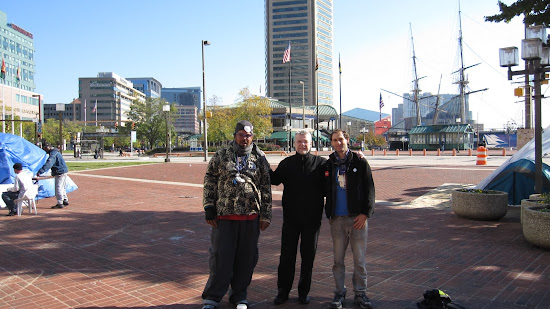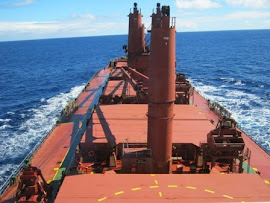Peninsular Malaysia
General DescriptionThe Federation of Malaysia comprises the former Federation of Malaya (now known as Peninsular Malaysia), Sabah (formerly British North Borneo) and Sarawak (West Borneo).
Peninsular Malaysia (or West Malaysia) is a comparatively narrow strip of land lying between Malacca Strait to the West and South China Sea to the East. The territory is about is about 725 km long 320 km wide at the widest point. The total area is about 131.600 sq. km and is divided into eleven states. Thailand borders the North limit and at the South extremity a number of islands comprise the Republic of Singapore.
The eight states are:
State Capital Population (2007 census)
Federal Territory Kuala Lumpur 1.887.674
Johor Johor Bahru 3.300.000
Kedah Alur Setar 1.818.188
Melaka Melaka 733.000
Negri Sembilan Seremban 1.004.807
Perak Ipoh 2.260.576
Perlis Kangar 215.000
Pinang Georgetown 1.503.000
Selangor Shah Alam 7.200.000
The remaining three states are Pahang, Trengganu and Kelatan.
The capital is Kuala Lumpur, situated on the west side of Peninsular Malaysia. In 1999 the new city of Putrajaya became the administrative capital.
National Limits
Territorial sea: 12 miles.
Exclusive economic zone: 200 miles.
History
In the fifteenth century Malacca (now Melaka) was the centre of a kingdom which extended to cover most of the land which is now Peninsular Malaysia and parts of Sumatera. In 1511 the town, which had become a wealthy entrepot with trade between merchants from China, Arabia and India was captured by a Portuguese fleet under Alfonso de Albuquerque. This marked the start of European expansion in SE Asia.
The Dutch ousted the Portuguese from Malacca in 1641, and in 1795 were replaced by the British who had leased Penang (now Pinang) from the Sultan of Kedah in 1786.
Full European control over the Sultanates of the Malay Peninsula, and Sabah and Sarawak, was not achieved until the latter half of the nineteenth century. In 1826, the British settlements of Malacca, Penang and Singapore were combined by the East India Company into The Straits Settlements. In 1876, The Straits Settlements became a Crown Colony under British rule.
Peninsular Malaysia was occupied by Japan from 1942 to 1945 during World War II.
After World War II, local communists, almost all Chinese, expanded their influence and planned for an armed struggle. A state of emergency was declared in June 1948, and a long bitter guerilla war ensued until 1960.
In 1957, the Federation of Malaysia was formed from the British-ruled territories of the Malaya peninsula with Tunku Abdul Rahman as prime minister. On 16th September 1963, the state of Singapore and the British colonies of North Borneo (re-named Sabah) and Sarawak joined the Federation to form Malaysia.
Singapore, on 9th August 1965, seceded from Malaysia to become an independent republic.
Government
The constitution, based on that of the former Federation of Malaya, provides for a strong federal government, but allows for a degree of autonomy for the thirteen state governments.
The Supreme Head of the Federation (Yang di-Pertuan Agong), and a deputy, serve for five years and are elected by the Rulers of the Malay States from amongst themselves.
The Federal Parliament consists of the Yang di-Pertuan Agong and two Houses, the Senate (Dewan Negara) and the House of Representatives (Dewan Rakyat). The Senate is formed from a combination of elected and appointed members from each state who serve for a six year term. House of Representative members are elected by universal adult suffrage with a common electoral roll and serve for a five year term.
Population
In 2007, the population of Malaysia was 28.294.000 million of whom some 5.860.700 live in Sabah and Sarawak. The principal ethnic groups are Malay (58%) and Chinese (27%), the remainder being of Indian or Sri Lankan origin, as well as the indigenous races of Sarawak and Sabah. These races include Kadazans, principally farmers and the largest section of the community, Bajaus, living on the coastal fringes and employed as fisherman, Muruts, hill tribesmen and Suluks, the seafarers. The distribution of the different groups is very uneven both within and between Peninsular Malaysia, and Sabah and Sarawak.
The Federal constitution provides for Islam as the official religion, but there is freedom of worship for varying proportions of Buddhist, Hindus, adherents for traditional Chinese religions, Christians and Sihks.
Languages
Bahasa Malaysia (Malay) is the official language. English is widely used in business. In Sabah, a number of tribal dialects are spoken. Other languages widely spoken are several dialects of Chinese (Mandarin and Hakka) and Tamil.
Industry and trade
Malaysia has been transformed from an economy based on agriculture and the export of raw materials, to one with significant manufacturing base producing consumer goods, including electronic components and appliances, textiles and clothing, cars, semi-conductors, and food processing. Rubber and tin mining are still important industries, although they have declined in relation to manufacturing over recent decades.
The chief exports are rubber, tin palm oil, electronic and electrical products, LNG, textiles, wood (sawn, timber, logs) and iron ore.
The chief imports are machinery and transport equipment, foods, manufactured goods, consumer durables and metal products.
The State of Sabah (Borneo)
General DescriptionThe state of Sabah is situated at the NE extremity of Borneo having Sulu Sea to the NE and South China Sea to the NW and Celebes Sea to the extreme SE. Sabah comprises an area of 73600 sq km. Kota Kinabalu is the state capital.
Early pirates called Sabah «the land below the wind!» because of its lying S of the typhoon region.
They could find shelter when the weather was too rough in the Philippines. Teluk Darvel was a favourite haunt of these renegades.
History
As early as the seventh century ships from China traded with the island but in 1881 the Sultans of Brunei and Sulu seceded the area of Sabah to the British North Borneo (Chartered) Company and until 1963, Sabah was known as North Borneo. On 15th July 1946, after occupation by the Japanese during World Ear 2, the Company’s sovereign rights and assets were transferred to the Crown. On 16th September 1963, North Borneo joined the Federation of Malaysia and became the State of Sabah.
Government
The constitution of Malaysia is based on that of the former federation, but includes safeguards for the special interests of Sabah and Sarawak. The constitutional Supreme Head of the Federation is elected for a 5 year term by the 11 State rulers of peninsula Malaysia and those from Sabah and Sarawak, from among their number.
The constitution of Sabah provides for a Head of State, called the Yang di-Pertua Nagara Sabah. Executive authority is vested in the State Cabinet headed by the Chief Minister. The Legislative Authority consists of the Speaker, 32 elected members and not more than six nominated members. Sabah has 16 seats in the Malaysian Government.
Population
The population of Sabah at the 2010 census was 3.120.040.
Physical Features
Borneo is the largest island in the Malay Archipelago. Chains of mountains traverse the island, the main range with peaks from 1525 to 1830 meters high terminating in Mount Kinabalu, the highest in the East Asia, 4100 meters in height, is situated 111 km S of the N extremity of the island. It is surrounded by a National Park with an area of 712 sq km.
Its vast interior consists of dense forest and jungle, densely populated with wild life but only sparsely populated by man. Except for a volcanic area in the central S part Borneo consists of sedimentary rock formations and extremely fertile. Marshlands are found near the coast.
The area of Borneo is 795.130 sq km, greater pert of which is under the sovereignty of the Republic of Indonesia. East Malaysian territories of Sarawak and Sabah extend over and along the NW, N and NE coasts of Borneo covering an area of 198.069 sq km. The independent state of Brunei, on the NE coast, is surrounded by these territories but enjoys its own coastline.
Flora
More than 300 types of tree are found in Borneo including screwpines, casuarinas, tree fern, swamp laurels, nipa palms, santirai, dipterocarps, rattan, papaya, rambutan, mangoes, breadfruit and dagger trees. The giant Colocasia, reaching heights of 60 meters grow in Sabah. Mangrove forests thrive in swamplands.
Fungi and mosses thrive on tree trunks in the rain forests. In savannah regions, tussock grasses grow to heights of 1.5 meters. Lalang grass takes over in poor soil and in areas of forest clearance. There are hundreds of flowering plants in Borneo.
Fauna
Mammals found in Borneo include elephant, rhinoceros, buffalo, deer, honey bear, tapir, tarsier, bat, lemur, orangutan, gibbon, and other monkeys.
Among the reptiles numerous kinds of snake, gecko and lizard are found. Boas, pythons, vipers and cobras are frequent. Among the tree snakes are two most unusual, the flying snake and the «two-headed» snake.
Included amongst the 550 species of bird are pelicans, cormorants, gulls, herons, ibises, spoonbills, ducks, owls, partridges, quail, parrots, cockatoos, hornbills, and, famous for providing the nests for birds-nest soup, swifts who populate limestone caves in Sabah.
Industry and trade
The principal exports of Sabah and Sarawak are forest products, fish and agricultural products. Imports include machinery, tobacco, provisions, petroleum, metals, rice, textiles, vehicles, sugar and building materials.
The State of Sarawak (Borneo)
General DescriptionThe Malaysian state of Sarawak, with an area of 124.449 sq km, extends along the NW coast of Borneo for about 725 km, varying in width from about 65 to 190 km. The capital is Kuching.
History
The sovereignty of the district, from Tanjung Datu (02o 05’.00E / 109o 39’.00E) at its W end, to the entrance to Batang Sadong (01o 34’.00E / 110o 45’.00E) was obtained on 24th September 1841 from the Sultan of Brunei, and various accessions were made between 1861 and 1905.
In 1888 Sarawak was recognized as an independent state and placed under British protection.
It was occupied by the Japanese on 16th December 1941. After liberation Rajah Brooke took over administration from British Military Authorities on 15th April 1946, and later that year Sarawak was ceded to the British Crown.
On 16th September 1963 Sarawak joined the Federation of Malaysia.
Government
Since 1855 two governing bodies have been in existence, the Supreme Council and the Council Negri, roughly corresponding, since 1941, to the colonial executive and legislative councils respectively.
There is a Governor of Sarawak. A ministerial system of government was introduced in 1963.
Sarawak has retained a considerable measure of local autonomy in state affairs, as allowed for by the federal constitution.
Population
The population of Sarawak in 2000 (census) was just over 2 million. Islam is the national religion.
Language
Bahasa Malaysia (Malay) is the sole official language, but English, several dialects of Chinese, and Tamil are also widely spoken. There are a few indigenous dialects widely spoken in Sabah and Sarawak.
Industry and trade
Industries include petroleum and petroleum products, natural gas, timber products, and rubber.
The principal exports are logs, liquefied natural gas, crude petroleum, sawn timber, pepper, cocoa beans, palm oil and rubber. The principal imports are machinery and transport equipment, manufactured gods, foods, mineral fuels, chemicals and inedible materials.
Admiralty Sailing Directions
Συνεχίζεται….
Chrisgio













 ...στον Παναμά
...στον Παναμά








































Δεν υπάρχουν σχόλια :
Δημοσίευση σχολίου